Neonatal murine skin-derived cells transplanted using a mini-chamber model produce robust and normal hair
August 2013
in “Journal of Tissue Engineering and Regenerative Medicine”
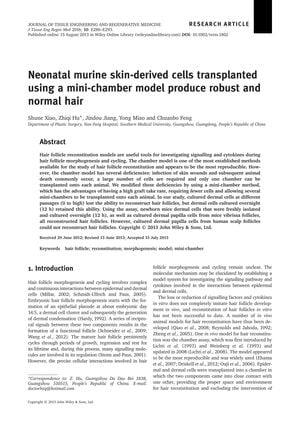
TLDR Transplanted baby mouse skin cells grew normal hair using a new, efficient method.
In the 2013 study, researchers successfully used a mini-chamber model to transplant neonatal murine skin-derived cells, resulting in the production of robust and normal hair in nude mice. This model was more efficient than traditional methods, requiring fewer cells and allowing multiple transplants per animal, with a high graft take rate. Freshly isolated neonatal murine dermal cells and those cultured overnight were both effective in reconstructing hair follicles, while human scalp follicle cells failed to do so. The density of hair reconstitution was dependent on the number of cells transplanted. The reconstituted hair follicles were confirmed to be formed by the grafted cells and were capable of long-term survival and regeneration after plucking. The study concluded that the mini-chamber model is a reliable and cost-effective method for hair follicle reconstitution studies and could be useful for future hair regeneration therapies.
View this study on onlinelibrary.wiley.com →
Cited in this study
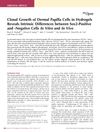
research Clonal Growth of Dermal Papilla Cells in Hydrogels Reveals Intrinsic Differences between Sox2-Positive and -Negative Cells In Vitro and In Vivo
Sox2-positive dermal papilla cells have unique characteristics and contribute more to skin and hair follicle formation than Sox2-negative cells.
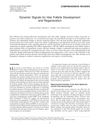
research Dynamic Signals for Hair Follicle Development and Regeneration
Certain signals and genes play a key role in hair growth and regeneration, and understanding these could lead to new treatments for skin regeneration.
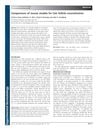
research Comparisons of mouse models for hair follicle reconstitution
The flap assay grows the most natural hair but takes the longest, the chamber assay is hard work but gives dense, normal hair, and the patch assay is quick but creates poorly oriented hair with some issues.

research Melanocyte stem cells: a melanocyte reservoir in hair follicles for hair and skin pigmentation
Melanocyte stem cells in hair follicles are key for hair color and could help treat greying and pigment disorders.

research The Hair Follicle as a Dynamic Miniorgan
Hair follicles are complex, dynamic mini-organs that help us understand cell growth, death, migration, and differentiation, as well as tissue regeneration and tumor biology.

research Hair Follicle Regeneration Using Grafted Rodent and Human Cells
Grafted rodent and human cells can regenerate hair follicles, but efficiency decreases with age.
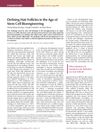
research Defining Hair Follicles in the Age of Stem Cell Bioengineering
The study found that bioengineered hair follicles work when using cells from the same species but have issues when combining human and mouse cells.
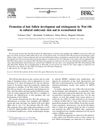
research Promotion of hair follicle development and trichogenesis by Wnt-10b in cultured embryonic skin and in reconstituted skin
Wnt-10b is important for starting hair growth and developing hair follicles.
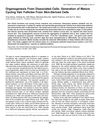
research Organogenesis From Dissociated Cells: Generation of Mature Cycling Hair Follicles From Skin-Derived Cells
Scientists have found a way to create hair follicles from skin cells of newborn mice, which can grow and cycle naturally when injected into adult mouse skin.
research Hair Follicle Pigmentation
research Molecular principles of hair follicle induction and morphogenesis
Hair follicle development is controlled by interactions between skin tissues and specific molecular signals.
research Molecular Mechanisms Regulating Hair Follicle Development
Understanding hair follicle development can help treat hair loss, skin regeneration, and certain skin cancers.
research The secret life of the hair follicle
Hair follicles create different cell layers and proteins, controlled by various molecules.
Related

research Possible Cellular Communication with Human Follicle Dermal Papilla Cells via Secretions from Human Hair Follicle Keratinocytes
Substances from human hair cells can affect hair loss-related genes, potentially leading to new treatments for baldness.
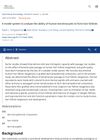
research A model system to analyse the ability of human keratinocytes to form hair follicles
Scientists developed a system to study human hair growth using skin cells, which could help understand hair development and improve skin substitutes for medical use.

research Review of hair follicle dermal cells
Dermal cells are key in controlling hair growth and could potentially be used in hair loss treatments, but more research is needed to improve hair regeneration methods.
research STUDY ON HAIR FOLLICLE FORMATION INDUED BY DERAMAL PAPILLA CELL
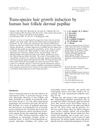
research Trans‐species hair growth induction by human hair follicle dermal papillae
Human hair follicle cells can grow hair when put into mouse skin if they stay in contact with mouse cells.
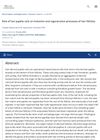
research Role of hair papilla cells on induction and regeneration processes of hair follicles
Hair papilla cells can create and regenerate hair bulbs under the right conditions.